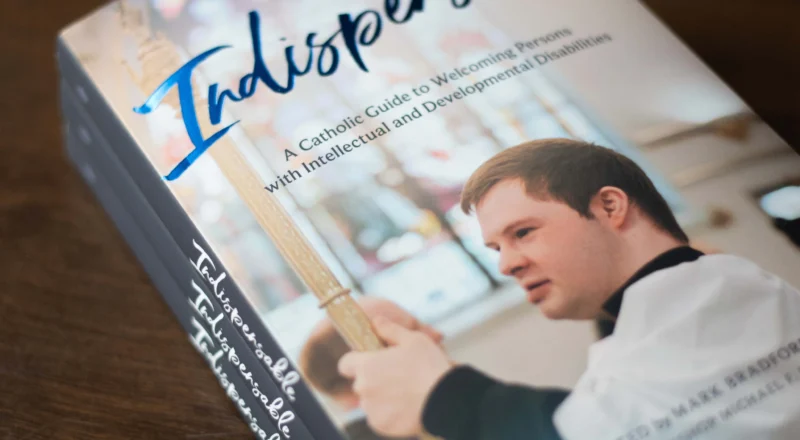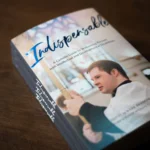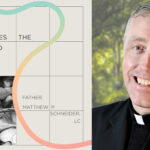I have advocated for every diocese to offer at least one sensory-friendly Mass so autistics who otherwise struggle to get to Mass can do so. Crisis carried a piece by Greg Cook today on a bunch of things around autism. His article seems to be trying to make more points than can effectively be made in that little space, and I will just focus on the discussion of autistics going to Mass. I was presented as the “mainstream approach” for this: given my national directory only has 16 sensory-friendly Masses, I hesitate to say my approach is now mainstream.
Crisis (Greg Cook) Arguing for Extraordinary Form Only

The main point Cook makes regarding autistics at Mass seems to be a preference for extraordinary form Masses. As he says:
In Father Schneider’s approach that might look like more attention to simplifying vision and sound at Mass. The problem is that the Novus Ordo is intrinsically talk and movement heavy. There is practically no quiet time in this Mass. He stresses “acceptance” by the parish and its people and celebrating autistic differences.
My answer? Tradition. By Tradition I mean structure, order, focus, quiet, and objective truth. All these characteristics are found in the Vetus Ordo with its disciplines and accoutrements.
The Novus Ordo is rife with variations depending on who is celebrating and other factors. The Traditional Mass is much more stable. No sharing the sign of peace, or hand-holding during the Our Father, or rampant talking immediately before and after Mass. No worries about approaching for Communion, possibly with laypeople involved. In the Traditional realm I first appreciated the Low Mass with its subdued actions and quiet, but over time I have come to also love the Missa Cantata and its rhythms.
Assisting at the Traditional Mass does not solve any of the issues that come with ASD, but it keeps my focus on God. Autism, while it may be unique in its characteristics, is no different than other human conditions in its relation to God. It does not confer an exempt status from seeking the Lord and striving to attain Heaven. I see it as a Cross. Or better yet, an irritant which will produce a pearl that is strong faith and eternity with God.
Why Both Ordinary AND Extraordinary Is a Better Approach
Now, I know that low Mass in extraordinary form is liked by many autistic Catholics. And I think that is great if that provides the sensory environment they need for Mass. I noted in 2019 that Low Mass in extraordinary form is a good option for Catholics who struggle with sensory issues at Mass. I support Cook’s personal decision to go to that Mass if that is the Mass that feeds his soul the most, and I support any other autistic Catholic who feels spiritually fed by it.
However, I think Cook errs when he presents it as the only option. There are plenty of autistic people who, for various reasons, do not find that extraordinary form helps them get close to God the same way ordinary form does. Many of us process things more intellectually, and often a Mass in a language you understand is helpful.
Also, a few of the points Cook makes are arguments against an ordinary form Mass contrary to the rubrics, but I work on the assumption when talking about the ordinary form that the priest is following the rubrics.
- An ordinary form Mass following the rubrics has “structure, order, focus, quiet, and objective truth.” At certain times a priest in the ordinary form will generally be speaking at an audible voice while he is whispering in the extraordinary form. (Although you may not realize this, in the ordinary form, a priest can validly celebrate Mass whispering almost the whole thing.) However, most with autistic sensory issues are not set off by a single person speaking at a moderate tone.
- He continues this as he argues the ordinary form has “sharing the sign of peace, or hand-holding during the Our Father, or rampant talking immediately before and after Mass.” The sign of peace is optional and often omitted in sensory-friendly Masses; mandatory hand-holding during the Our Father is a 70s thing that is contrary to the rubrics and is going out of style; and the volume is more about who goes than which form. (I’ve seen stricter silence around ordinary-form Masses in religious houses than when I went to extraordinary-form Mass in college [although that Mass was more silence in the Church proper than an average parish]).
- He also speaks as if there is a theological problem with a non-ordained person distributing Communion: although we are to prefer the ordained, if there is a large crowd where Communion would take too long, the unordained can distribute Communion.
Finally, even if an autistic person prefers extraordinary form, there are a few practical issues. First, not every priest has good enough Latin to say extraordinary form Mass (I do and have said it). Second, it is often simply a reverse cry room and not the whole Mass that is sensory-friendly, and you can’t directly mix the rites. I support extraordinary form where there are enough people who feel more spiritually fed by it, but in places that is not the case, a reverse cry room may be the best solution available.
In conclusion, let’s continue to offer sensory-friendly Masses in both forms of the Roman rite.










Hand holding is also very regional. I never saw that in Polish churches, for example. It always made American masses cringy.